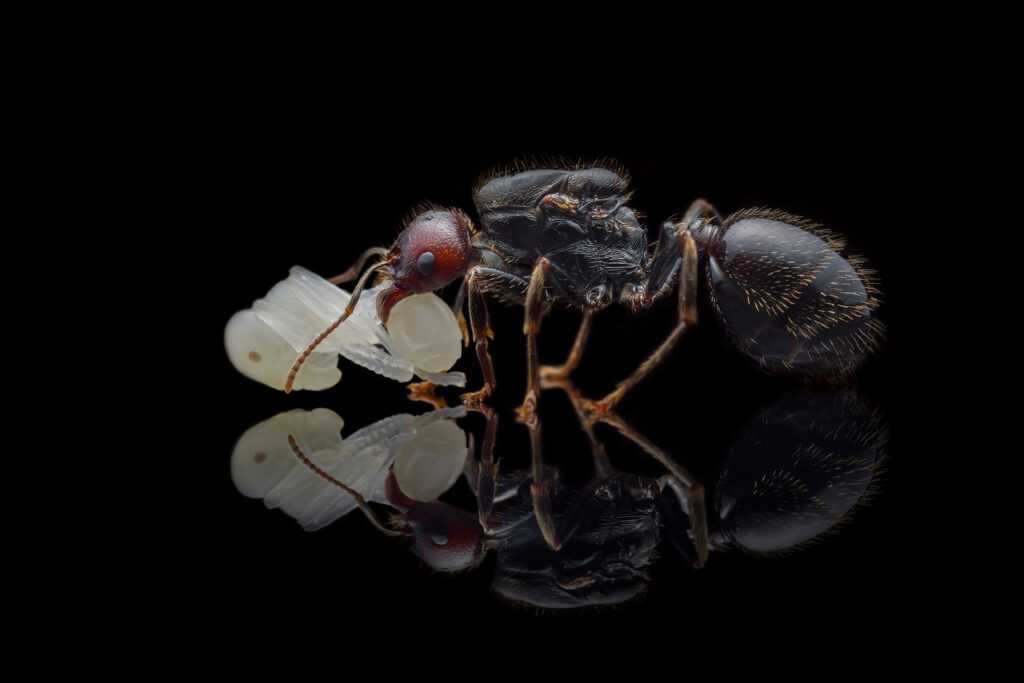Crematogaster senegalensis
type of colony monogyny
size
Crematogaster senegalensis is a monogyny species, meaning they have a single queen in each colony. This queen measures around 12-15 mm in size, while the workers are smaller, ranging from 2-5 mm. These ants can form colonies of up to 10,000 individuals, making them a formidable force in the insect world.
Development Speed
The development speed of Crematogaster senegalensis is fast.
Appearance
Crematogaster senegalensis ants are predominantly black in color.
Nutrition
There ants have diverse dietary preferences. To meet their nutritional needs, they require a combination of insect food such as cockroaches and crickets, syrup made from water and honey (in various ratios, including 4:1, 3:1, or 2:1), fruits, vegetables, jelly, and cooked chicken without salt. Providing a balanced diet is essential to maintain the health and vitality of the colony.
Humidity and Temperature Requirements
Crematogaster thrive in specific dry humidity and temperature conditions. In the arena area, where they forage and explore, a humidity level of 30-50% is recommended. Within the nest, the humidity should be slightly higher, from 40-60%.
When it comes to temperature, the ideal range for the arena area is between 24-32°C, providing the ants with a comfortable environment for their daily activities. Inside the nest, the temperature should be kept slightly lower, around 24-26°C, as the ants require a cooler and more consistent environment for brood rearing.
Recommended Nests for Breeding
When it comes to providing a suitable nesting environment for Crematogaster senegalensis , several options are available. Acrylic, gypsum, and aerated concrete nests are considered ideal choices for their breeding. These materials provide the necessary durability, moisture regulation, and insulation required for the ants’ overall well-being.
By offering the right kind of nest, you can create an optimal habitat for Crematogaster senegalensis, allowing them to establish a thriving colony and enabling you to observe their fascinating behavior up close.
Overall, Crematogaster senegalensis ants are an intriguing species, known for their monogyny colony type and exceptional breeding speed. By understanding their unique characteristics and providing the appropriate care, you can have an enriching ant-keeping experience with these remarkable creatures.


















Reviews
There are no reviews yet.